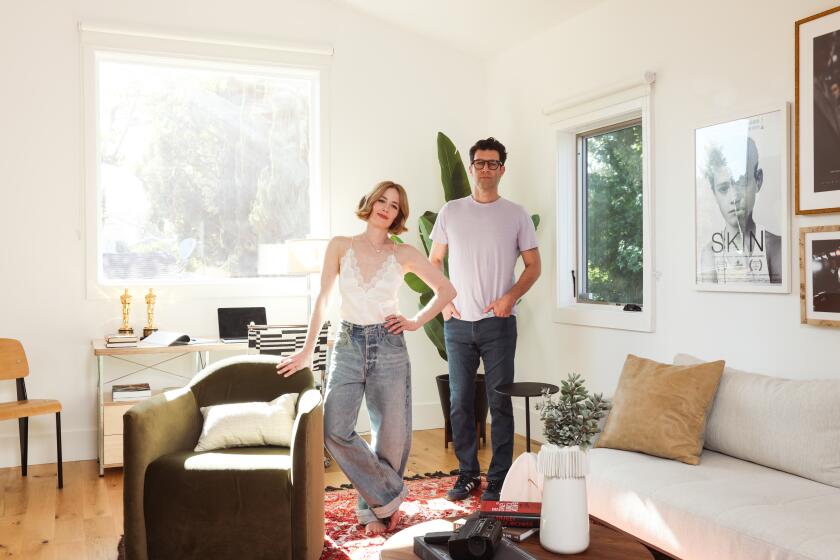The splashiest history
Long, long ago, when the vast majority of America still didn’t know how to swim, the country could look to Southern California and find dreamers who were building pools. The history of backyard swimming was written largely in Los Angeles. A few snapshots:
1920: Douglas Fairbanks and Mary Pickford add one of the country’s largest pools -- 55 feet wide, 100 feet long, with a sandy beach -- to their Beverly Hills property, Pickfair.
1924: William Randolph Hearst builds his first pool at San Simeon. It’s a T-shaped design that soon is supplanted by the iconic Neptune Pool, where Hearst demonstrates his powers of restraint with marble colonnades and the facade of a Greco-Roman temple placed poolside.
1925-27: Edward Doheny’s Greystone estate in Beverly Hills rises with pools, ponds and epic hillside waterfalls.
1929: Five years after Frank Lloyd Wright builds the landmark Ennis House with a pool, Richard Neutra wraps construction on his famed Lovell Heath House on a nearby hillside in Los Feliz, complete with a pool in place of a terrace.
1937: “A Star Is Born” showcases Beverly Hills real estate entrepreneur Edwin Janss’ two pools -- one for swimming, the other for show.
1938: Jack Benny is photographed canoeing across his pool. Bing Crosby, Red Skelton and other Hollywood stars also paddle across their pools -- fully dressed -- for publicity.
1939: In Los Angeles, Philip Ilsley begins experimenting with rounded pool surfaces instead of the traditional boxy shapes. Ten years later, as owner of Paddock Pools, he finishes the design that will change the shape of pools for decades to come: a free-form, three-leaf clover set in the Hollywood Hills.
1947: The total number of pools nationwide hits 11,000. Julius Shulman snaps his famed photograph of the Kaufmann House in Palm Springs, where the darkening dusk is brightened by a glowing pool. Six years later, his picture of Frey House also helps to define desert living.
1948: Inspired by creeks and marshes that lie nearby, builder Thomas Church creates a kidney-shaped pool in Sonoma. The biomorphic design sparks copycat pools throughout the ‘50s and ‘60s.
1950: Joe Gillis (William Holden) takes a bullet and a long, long swim courtesy of Norma Desmond (Gloria Swanson) in “Sunset Boulevard.”
1957: Preceding the infinity pool craze by about 30 years, architect John Lautner gives the pool at the Silver Top residence in Silver Lake a “vanishing edge” of water.
1970: Cleo Baldon of the Venice-based landscape design firm Galper Baldon Associates claims to bring the lap pool to California.
2004: A Times story reports that 19,659 gallons of water evaporate from a typical uncovered pool each year, according to estimates from the Metropolitan Water District. The statistic loses some of its immediacy when followed by two years of above-average rainfall.
2007: The number of residential swimming pools in the state is estimated at 1.1 million, of which 60% to 75% are in Southern California. One trend: no pool at all -- just a spa.
--
Sources: “The Springboard in the Pond: An Intimate History of the Swimming Pool” by Thomas A. P. van Leeuwen; “Reflections in the Pool: California Designs for Swimmers” by Melba Levick, Cleo Baldon and Ib Melchior; California Spa and Pool Industry Education Council; Los Angeles Times archives.
Sign up for The Wild
We’ll help you find the best places to hike, bike and run, as well as the perfect silent spots for meditation and yoga.
You may occasionally receive promotional content from the Los Angeles Times.



